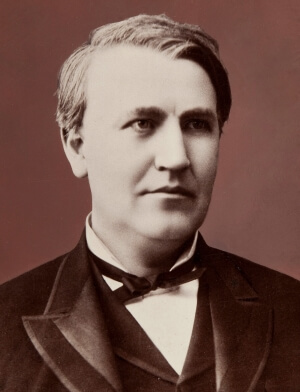- ICCONS,Shoranur, Palakkad (0466)2224869; 6238440945
- ICCONS, Pulayanarkotta,Trivandrum-11 (0471)2440232, 2447729
- icconssrr@gmail.com
- icconstvpm2018@gmail.com

Learning Disabilities - Problem in International Level
An over view of the current status of the problem at International level is reviewed here.
- a. Epidemiological aspect
Silva (1987) reported that 1% of children suffer from severe delay in speech and language development and 3-15% depending upon definition and population studied has some degree of language delay. These disorders are important because they interfere with the child's ability to communicate and learn and also because of their association with learning difficulty (Howling and Rufter, 1987, Silva 1987). Dyslexia is common in school children and is reported to affect 2-8% of this population. In an epidemiological longitudinal study at Connecticut on children in kindergarten through grade III, it was reported that on the basis of objective test based research criteria, about 9% of boys and 6-7% of girls in the 2nd grade and 3rd grade were classified as reading disabled. In a yet another study conducted in England on a group of children who were attending pre -school, it was found that 30% of them were language impaired requiring therapy before entering schools. A study from USA noticed among the white middle class children between 3 and 4 years old in Detroit 8.5% were 1 year behind the normal on standardized language assessment batteries. The prevalence of impairment was greater in the lower than the middle socio-economic group in both whites and blacks. The follow-up studies revealed that even with therapy 70% children continue to have signs of language disorder and 60% of them were in special schools for learning disabled or mentally retarded. In another study children were seen at 6 yrs of age and were followed up to young adulthood and it was noticed that 50% of them continue to have abnormal language performance. Scholastic tests demonstrated that language-impaired group had reading deficits and lower educational achievement. In the mid 1960's in Canada, the commission on emotional and learning disorders in children (CELDIC) was appointed. This multidiscipline professional group published its findings in 1970 under the title "one million children" (CELDIC report 1970). The report concluded that about 16% of all Canadian children were in need of specific remedial treatment. The writers of the report collected incidence studies of children with special needs from several countries and their findings were as follows: Great Britain14%, ¬France12-14%, ¬United States10-15 %, and ¬Canada10-16%.
Epidemiological data as reported by Shaywitz in 1998 indicate that, like hy¬pertension and obesity, dyslexia fits a dimensional model. In other words, within the population, read¬ing ability and reading disability occur along a con¬tinuum, with reading disability representing the lower tail of a normal distribution of reading ability. Dys¬lexia is perhaps the most common neurobehavioral disorder affecting children, with prevalence rates ranging from 5 to 10 percent to 17.5 percent. Formerly, it was believed that dyslexia affected boys primarily (Finucci et al) however; more recent data indicate sim¬ilar numbers of affected boys and girls (Flynn et al &Shaywitz et al). Results from longitudinal studies, as accounted by Shaywitz, both prospective and retrospective, indicate that dyslexia is a persistent, chronic condi¬tion; it does not represent a transient "developmental lag." Over time, poor readers and good readers tend to maintain their relative positions along the spec¬trum of reading ability.
- b. Neurological and Neuro - anatomical Correlates of Learning Disabilities
The notion that Dyslexia may have a neurological origin was initially and independently mentioned at the turn of the last century by the Scottish ophthalmologist James Hinshelwood and the British Physician Pringle Morgan (1895&1896). Both emphasized the similarity of certain symptoms in Dyslexic children with the neurological syndrome of “Visual Word Blindness”. In 1891, the French Neurologist, Jules Dejerine has shown that damage to the Left Angular gyrus can lead to impairments in reading and writing, suggesting this region may play a special role in processing the “optic image of letters”. Hence it was proposed that defective reading and writing abnormality in their Dyslexic children may be due to defective development of the left angular cortex, which was responsible for alexia and agraphia in adult patients. These speculations were confirmed in the autopsy study of a Dyslexic child who demised following a brain hemorrhage due to AVM. This boy had difficulty in reading and there was family history of Migraine and Learning Disability, autopsy study revealed ectopia of the left inferior parietal region.
Another Neurological speculation was that the Dyslexic children had poor or inadequate functional brain lateralization especially for language. American Neurologist, Samuel Orton (1925, 1937) was recognized as the “founding father” of the theory of atypical lateralization of language functions in dyslexics. This theory was further elaborated in great detail by Norman Geschwind, who proposed that language lateralization to the left hemisphere was delayed in dyslexics so that language prerequisites for learning to read could not develop normally. This is correlated with high incidence of left-handedness and mirror writing in Dyslexic children. This theory has been at the origin of a large number of studies especially those using lateralized brain stimulation such as Dichotic listening (Obrzut, 1988;Harel and Nachson1997). Albert Galaburda and Norman Geschwind, who (1982; 1985; 1987) in the second half of the twentieth century established the theory of brain asymmetry in general and cortical asymmetry particularly in Dyslexics were the key issue for the neurological basis of these disorders.
The most significant contribution to the neurology of Dyslexia was the description of Galaburda and Colleagues on the brains of eight subjects, five males and three females, with dyslexia (Galaburda and Kemper, 1979), (Galaburda et al 1985), (Humphreys et al 1990). They made two main observations: First, at the microscopic level, a meticulous analysis of the serial coronal slices of the postmortem specimens, compared with a similar analysis of the non-dyslexic brain showed specific cortical malformations including ectopias, mainly distributed across both frontal regions and the left language areas; dysplasia and more rarely vascular micro-malformations. (Kaufmann and Galaburda, 1989). In some instances these cortical malformations took the appearance of a microgyrus or poly microgyrus, an aspect also found in the subsequent analysis by Cohen and colleagues in the brain of a dysphasic child (Cohen et al 1989). While the case reported by Cohen et al is an unequivocal case of delayed language acquisition, in several of the Dyslexic reported by Galaburda et al (1985) also have delayed oral language acquisition. The study by Cohen et al did not reveal any ectopia, but microgyria in the temporal cortex was noted, similar to that of the study by Galaburda and Kemper (1979). The main lessons drawn from these studies are that Dyslexic has an abnormal cortical development compared to the normal. Since neuronal migration is supposed to take place in the sixth month of intrauterine development, the mechanism leading to these cortical abnormalities might be occurring before or during this period of fetal brain development. In addition to these observations the female brains showed glial scars in the border zone between arterial territories, suggesting a vascular mechanism, supposedly of immune origin (Humpherys et al 1990).
Besides these microscopic abnormalities, all the Dyslexic brains of the Boston studies and that of the study by Cohen et al showed macroscopic abnormalities in the form of an absence of normal Left>right asymmetry of the planumtemporale. Since this asymmetry was believed to parallel the functional linguistic preponderance of the left hemisphere, this observation is important. However since the planum asymmetry is present at least in one third of the routine brains, the planum asymmetry seemed necessary but not sufficient to define the dyslexic brain. The developmental mechanisms leading to such atypical asymmetry still remain as a debate, these findings combined with the microscopic abnormalities have been generally considered as an evidence for maturational deviation as an underlying mechanism for the learning disabilities of dyslexic children.
- c. Neuroradiological advents in the understanding of Learning Disabilities
There is a global tendency in the literature to confirm in vivothe initial neuropathological observations of Galaburdaet al. (1985). The advent in Neuroradiology provided the advantage of studying the neuroanatomical abnormalities in many developmental disorders including learning disability during life. The introduction of Computerized axial Tomography (CT) scans was first in this respect .The CT scans of the brains of children with dyslexia revealed abnormality in the form of reversal in the usual left to right asymmetry (Rosenberger et al 1980).
The introduction of Magnetic Resonance Imaging (MRI) revolutionized the neuroanatomical studies as it could provide more detailed information on the structural abnormalities. Several attempts have been made towards a better understanding of the significance of cortical asymmetries through in vivo morphological imaging of the dyslexic brain using MRI. Though initial studies seemed to back up Galaburdaet al(1985) neuropathological findings, with a larger incidence of reversed or absent asymmetry, more recent studies using more refined MRI technology have failed to verify such a tendency. This is especially so in the studies where the surface area of the planumtemporale was measured directly with a MRI - based surface reconstruction technique and they failed to find any group difference in asymmetry (Green and colleagues, 1999), (Habib and Robichon, 1996). Instead, they found that a parietal area, situated in front of the planumtemporale, on the other bank of the Sylvian fissure, is less asymmetrical in dyslexics than in controls, and that the degree of asymmetry of this area is inversely proportional to the individuals' performance on a phonological task. These inconsistent study results are explained by Habib (2000) as related to the selection of subjects, or to the mode of anatomical measurement. Alternatively, purely environmental factors may act as confounding variables. For example, it has been demonstrated that intensive training in the auditory modality can modify the degree of asymmetry in the posterior auditory region, increasing the size of the left planum (Schlauget al.,19958). This finding is in line with neuronal plasticity studies in animals, showing that direct training notably alters the sensory neural maps at the single cell level (Recanzoneet al.,1993).
Functional Neuroimaging (fMRI) was another major advancement in the field of neuroimaging .A number of functional brain imaging studies have targeted towards some of theunderlying processes that are assumed to be compromised in dyslexia,and have attempted to locate brain regions with abnormal activationin dyslexics. Flowers and colleagues were the first to testthe hypothesis of abnormal left hemisphere activation in dyslexicsduring a language task (Flowers et al., 1991). They found thatdegree of reading impairment correlated with reduced activationin posterior tempero-parietal cortex during an auditory rhymingtask. Rumsey and colleagues (1992), Paulesu andcolleagues (1996) and Shaywitz and colleagues(1998) also scanned dyslexics during rhymejudgments. The studies all show abnormal activation patternsin the left perisylvian and extrasylvian temporal cortices. Functional neuroimaging studies have demonstrated that the cognitive deficit in dyslexia is related to a pattern of brain organization different from that seen in typical readers. Specifically, this neural signature of dyslexia is characterized by under-activation in posterior brain regions (particularly the angular gyrus) and over-activation in anterior brain regions as dyslexic readers engage phonologic analysis.
- d. Contribution of electrophysiological studies to the understanding of the neurology of LD:
Abnormalities in EEG were reported even as early as 1960s. In fact it was one of the criteria for MBD which was another prototype of LD. Till 1975 routine clinical EEG was done and more sophisticated techniques in the evaluation of dyslexia were done after 1975. It was found regardless of the investigator or technique between 27 – 88% of children with inadequate school performance showed EEG abnormalities. Nevertheless the opinion regarding the specificity of the EEG abnormality in Learning disability differed from author to author. Initial work in this area used EEG data as indices of cortical dysfunction. Major difficulties encountered have been concerned with the interpretation of the temporal and spatial relationship of vast arrays of electrode patterns in ongoing brain activity. To deal with this problem, Duffy, Burchfield, and Lombroso (1979) developed the brain electric activity mapping (BEAM) technique, which can summarize, reduce, and visually display spectral, spatial and temporal information of brain activity from 20 different scalp locations. The BEAM recording technique has demonstrated diagnostic utility within a well-defined population of dyslexics, finding that dyslexia is a neurophysiologic problem with topographically specific brain areas of dysfunction (Duffy, Denckla, Bartels &Sandini, 1980). Discrete brain areas were identified in the "pure" dyslexic subjects as being significantly different from the age-matched control subjects. These areas have been classically associated with speech and reading in normal individuals as measured by more invasive techniques such as sodium Amytal testing (Wada & Rasmussen 1960) and regional cerebral blood flow (rCBF) (Lassen, Ingvar. &Skinhoj. 1978).
Another electrophysiological procedure often used to investigate the basis of learning disability has been the evoked potential (EP). This procedure has en¬countered the same type of difficulties encountered by the EEG studies, but the difficulties have similarly been somewhat ameliorated by the BEAM technique (Duffy et al 1979). Further refinement of this pro¬cedure has resulted in the finding that brainstem evoked responses (BSER) appear to be a viable elec¬trophysiological procedure to assess learning dis¬ability. Earlier auditory brain stem responses have been evoked by the binaural presentation of a brief, discrete sound stimulus and recording of the poly¬phasic change in the electrical activity of the brain stem during the first 10 msec. following the stimulus. These BSERs are thought to be the far-field reflection of sequential electrical events at successively higher Ievels of the brain stem auditory pathway. Refinement in this approach involved presenting the auditory stimulus monaurally to the left or right ear, and determining any asymmetry in the BSER that occurs in response to the monaural stimulus. The research in evoked responses in learning-disabled populations has, focused upon abnormalities in laterality or asym¬metry in the cerebral cortex.
- e. Theoretical Explanations Of Learning Disability
The phonological – Deficit Hypothesis: The phonological theory postulates that dyslexics have a specific impairment in the representation, storage and/or retrieval of speech sounds. It explains dyslexics’ reading impairment to the fact that learning to read an alphabetic system requires learning the grapheme – phoneme correspondence, i.e.; the correspondence between letters and constituent sounds of speech If these sounds are poorly represented, stored or retrieved, the learning of grapheme phoneme correspondences, the foundation of reading for alphabetic systems, will be affected accordingly (Bradley and Bryant, 1978; Vellutino, 1979; Snow ling, 1981; Brady and Shankweiler, 1991). While theorists have different views about the nature of the phonological problems, they agree on the central and causal role of phonology in dyslexia. The phonological theory therefore postulates a straightforward link between a cognitive deficit and the behavioural problem to be explained. At the neurological level, it is usually assumed that the origin of the disorder is a congenital dysfunction of left-hemisphere perisylvian brain areas under¬lying phonological representations, or connecting between phonological and orthographic representations. Support for the phonological theory comes from evidence that dyslexic individuals perform particularly poorly on tasks requiring phonological awareness, i.e. conscious segmenta¬tion and manipulation of speech sounds. However, evidence for poor verbal short-term memory and slow automatic naming in dyslexics also points to a more basic phonological deficit, perhaps having to do with the quality of phonological representations, or their access and retrieval (Snowling, 2000). Anatomical work (Galaburdaet al., 1985; Geschwind and Galaburda, 1985) and functional brain imaging studies support the notion of a left perisylvian dysfunction as a basis for the phonological deficit (Paulesuet al., 1996, 2001; Shaywitzet al., 1998; Brunswick et al., 1999; McCroryet at., 2000; Pugh et al., 2000; Temple et al., 2001; Shaywitzet al., 2002).
The rapid auditory processing theory: specifies that the deficit lies in the perception of short or rapidly varying sounds (Tallal, 1980; Tallalet al., 1993). Support for this theory arises from evidence that dyslexics show poor performance on a number of auditory tasks, including frequency discrimination (McAnally and Stein, 1996; Ahissaret al., 2000) and temporal order judgment (Tallal, 1980; Nagarajanet al., 1999) Abnormal neurophysiological responses to various auditory stimuli have also been demonstrated (McAnally and Stein, 1996; Nagarajanet at. 1999; Kujalaet at. 2000; Temple et at. 2000; Ruff et at., 2002).In this view, the auditory deficit is therefore the direct cause, in .the course of development, of the phonological deficit, and hence of the difficulty in learning to read.
The visual theory (The Magnosystem theory): The visual theory (Lovegrove et al., 1980; Livingstone et al., 1991; Stein and Walsh, 1997) reflects another long¬standing tradition in the study of dyslexia, that of considering it as a visual impairment giving rise to difficulties with the processing of letters and words on a page of text. This may take the form of unstable binocular fixations, poor vergence (Cornelissen et al., 1993; Stein and Fowler, 1993; Eden et al., 1994), or increased visual crowding (Spinelli et al., 2002). The visual theory does not exclude a phonological deficit, but emphasizes a visual contribution to reading problems, at least in some dyslexic individuals. At the biological level, the proposed etiology of the visual dysfunction is based on the division of the visual system into two distinct pathways that have different roles and properties: the magnocellular and parvocellular pathways. The theory postulates that the magnocellular pathway is selectively disrupted in certain dyslexic individuals, leading to deficiencies in visual processing, and, via the posterior parietal cortex, to abnormal binocular control and visuospatial attention (Stein and Walsh, 1997; Hari et al., 2001). Evidence for magnocellular dysfunction comes from ana¬tomical studies showing abnormalities of the magnocellular layers of the lateral geniculate nucleus (Livingstone et al., 1991), psychophysical studies showing decreased sensitiv¬ity in the magnocellular range, i.e. low spatial frequencies and high temporal frequencies, in dyslexics (Lovegrove et al., 1980; Cornelissen et al., 1995), and brain imaging studies (Eden et at., 1996). Galaburda and colleagues have shown that, just as the . M-pathway may be specifically affected in the dyslexics' lateral geniculate, the same may be true for the medial geniculate, situated on the auditory pathway (Galaburdaet al., 1994). In this view, dyslexia would be a 'pathology of the magnosystems', which could account for phonological as well as visual impairment.
The cerebellar theory: Yet another view is represented by the automaticity/ cerebellar theory of dyslexia (Nicolson and Fawcett, 1990; Nicolson et al., 2001) Here the biological claim is that the dyslexic's cerebellum is mildly dysfunctional and that a number of cognitive difficulties ensue. First, the cerebellum plays a role in motor control and therefore in speech articulation. It is postulated that retarded or dysfunctional articulation would lead to deficient phonological representations. Secondly, the cerebellum plays a role in the automatization of overlearned tasks, such as driving, typing and reading. A weak capacity to automatize would affect, among other things, the learning of grapheme-phoneme correspondences. Support for the cere¬bellar theory comes from evidence of poor performance of dyslexics in a large number of motor tasks (Fawcett et al., 1996), in dual tasks demonstrating impaired automatization of balance (Nicolson and Fawcett, 1990), and in time estimation, a non-motor cerebellar task (Nicolson et al., 1995). Brain imaging studies have also shown anatomical, metabolic and activation differences in the cerebellum of dyslexics (Rae et al., 1998; Nicolson et al., 1999; Brown et al., 2001; Leonard et al., 2001).
The magnocellulartheory: Finally, there is a unifying theory that attempts to integrate all the findings mentioned above. A generalization of the visual theory, the magnocellular theory (Stein and Walsh, 1997) postulates that the magnocellular dysfunction is not restricted to the visual pathways but is generalized to all modalities (visual and auditory as well as tactile). Furthermore, as the cerebellum receives massive input from various magno¬cellular systems in the brain, it is also predicted to be affected by the general magnocellular defect (Stein et al., 2001). Through a single biological cause, this theory therefore manages to account for all known manifestations of dyslexia: visual, auditory, tactile, motor and, consequently, phono-logical (for an attentional variant see Hari and Renvall, 2001). Beyond the evidence pertaining to each of the theories described previously, evidence specifically relevant to the magnocellular theory includes magnocellular abnormalities in the medial as well as the lateral geniculate nucleus of dyslexics' brains (Livingstone et al., 1991; Galaburdaet al., 1994), poor performance of dyslexics in the tactile domain (Grant et al., 1999; Stoodleyet al., 2000), and the co-occurrence of visual and auditory problems in certain dyslexics (Wittonet al., 1998; Cestnick, 2001; van Ingelghemet al., 200 I).
- f. Medical Causes and other etiologies of LD:
The Genetic hypothesis: The notion that some forms of learning disability may be genetic, has been raised since 1905. The evidence includes family history, the presence of reading disability in monozygotic and dizygotic twins, and the likelihood that a genetically determined reading disability will persist through a lifetime (Defries et al 1991). Byring (1984) reported dyslexia in relatives of 77% of their group of 97 Swedish speaking Finnish children. They also reported that dyslexia persisted in 85% of their subjects in a 7 – 10 year follow up to the age of 17 years. Defries et al estimated that heritable factors account for 60% of the variance in learning disability.The present studies though emphasis that dyslexia is genetic in origin ,because of the familial aggregation ,genetic transmission is probably complex and non exclusive. It is conceivable that different forms of dyslexia may occur in the same family and different genes have been implicated in the different aspects of the reading disorders. Recent discoveries regarding the involvement of specific chromosomes (Fagerheim et al.1999;Fisher et al.1999;Gayan etal.1999) to different aspects of reading is important here. For instance, it has been suggested that chromosome15 is related to performance on a single word reading task, while chromosome 6 involvement would be related to Phonological awareness task (Grigorenko et al.1997; Fisher et al.1999).The data obtained by Castles and colleagues in a study of twin sample (Castles et al 1999) compared the subject’s score on exception word reading to and non word reading tasks to build surface and phonological dyslexic sub groups taken at each end of this distribution. Reading deficits were found to be significantly heritable in both subgroup, yet the genetic contribution was much greater in the phonological dyslexic than in the surface dyslexic. This suggests that there is significant environmental influence for the surface dyslexic. The nature of such an environmental influence is highly speculative but the hypothesis of influence of prenatal environment seems significant.(Gescwind and Behan 1982;Bryden et al 1994).
The high prevalence of oral or written language deficits among children with Learning disability suggests a special vulnerability of the left hemispheric cortical system subserving various aspects of language related abilities to the etiological factors.(Geschwind and Galaburda 1985).Hormonal factors , especially fetal testosterone level during the late pregnancy ,may play a crucial role ,and this is possibility reflected in the large male predominance in most of the Learning disabilities and developmental language disorders.
Geschwind and Galaburda in the celebrated work on cerebral lateralization have extensively studied the biological mechanisms on language lateralization and anomalous dominance in Learning Disability or Dyslexia. They hypotheses that Normal or anomalous Language Dominance and Lateralization of functions are multifactorial and probably genetically and Hormonally linked. The human brain is asymmetric even in fetal life resulting from an early development of the structures around the sylvian region over right side .These findings are compactable with concept that the fundamental pattern of the brain development usually include strong asymmetries favoring the structures around the left Sylvian fissure. There are probably some influences that slow the growth of parts of the left hemisphere of the brain, so that the corresponding regions on the right side develop relatively more rapidly resulting in the normal asymmetry. It is postulated that, because of the high incidence of sinistrality and of Learning Disability in men, male related factors like testosterone or other factors have role on this. The male related factor thus acts to alter the expression of certain genes that play an important role in neural development. In the Dyslexic and language delayed individuals influence of the male related factor, especially the testosterone ,during pregnancy produce a shift of the normal asymmetry to symmetry or even right predominance, thus leading to abnormal language development as well as left handedness. Geschwind – Galaburda also postulated a linkage between dyslexia, left handedness, and autoimmune and allergic disorders based on the theory of prenatal testosterone exposure.
Co morbidity with other disorders that have genetic association also has stimulated research into the genetic transmission of learning disability. LD is often associated with conditions like Tourette’s syndrome, allergic disorders, and other immune mediated disorders. These disorders are also associated with left handedness and anomalous cerebral dominance.
Pennington and Smith (1983) stated in their critical review about genetic involvement in learning disability that some forms of learning disability are transmitted genetically, and there are likely to be several forms of familial learning disability involving different forms of transmission. Learning disability does not appear to be sex-linked disorder, but there is a sex difference in expression, likely due, in part, to normal, genetically based sex differences in language skills. There are different learning disability phenotype and phenotypic variability across family members of similar ages.
Perinatal Stress Factors and Learning Disability: Kawi and Pasamanick (1958) provided one of the earliest studies of the relationship between birth history and learning disorders. They found that 16% of infants exposed to two or more complications during birth (especially fetal anoxia) had learning problems later in life. They suggested that a continuum of reproductive casualty arises from stress factors at birth that may extend from fetal death to behavior and learning problems. Goldberg and Schiffman 1972 also suggested that unrecognized minimal birth injury could express itself in speech and later in learning problems.
Childhood cancer: In a follow – up study of extra hemispheric tumors treated with radiation, Perez et al. found that visual attention and memory are most affected. However, deterioration continues to progress over time, ultimately infringing on abstract thought and verbal skills, particularly in the younger patients. Moore et al. find neuropsychological (especially attention, memory, and visuospatial skills), motor speed and evoked response deficits in children receiving central nervous system radiation for tumors outside the central nervous system. Slowing of cortical activity secondary to white matter damage may underlie the cognitive decline.
Prematurity: Premature delivery is a risk factor for developmental language disorders and for non-verbal learning disabilities. Roth et al, suggest that the high frequency of right hemisphere dysfunction could relate to subtle hypoxic injury of callosal tracts.
Metabolic Disorders: Learning disabilities rather than mental retardation can be the presentation of metabolic disorders. Lamay et al, report on seven patients with ornithine metabolism abnormalities, only two of whom had episodic hyperammonemia. White matter abnormalities and buccal lingual dyspraxia were notable specific characteristics.
Otitis: Lous finds that hearing, but not past history of otitis correlates with silent reading skills in first grade.
- g. Sex differences in Learning Disabilities
Although boys more often than girls suffer from developmental disabilities, Eme reviews the literature supporting the paradox that girls when affected have more sever deficits. For example, Lewis’ study of phonologic language disorders reveals an increased frequency of other language and learning disorders in the family where the proband is female. Eme suggests two possible models – the polygenetic multiple threshold model and the constitutional variability model; neither, however, provides a fully satisfactory explanation of the phenomenon. Pennington et al. found a greater male – female ration in the subgroup of the Colorado reading project twin study who meets the IQ – achievement discrepancy criteria as opposed to the age – achievement discrepancy criteria (low reading achievement). Studies with the least stringent cutoffs seem to find the least sex differences.








